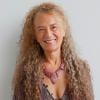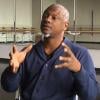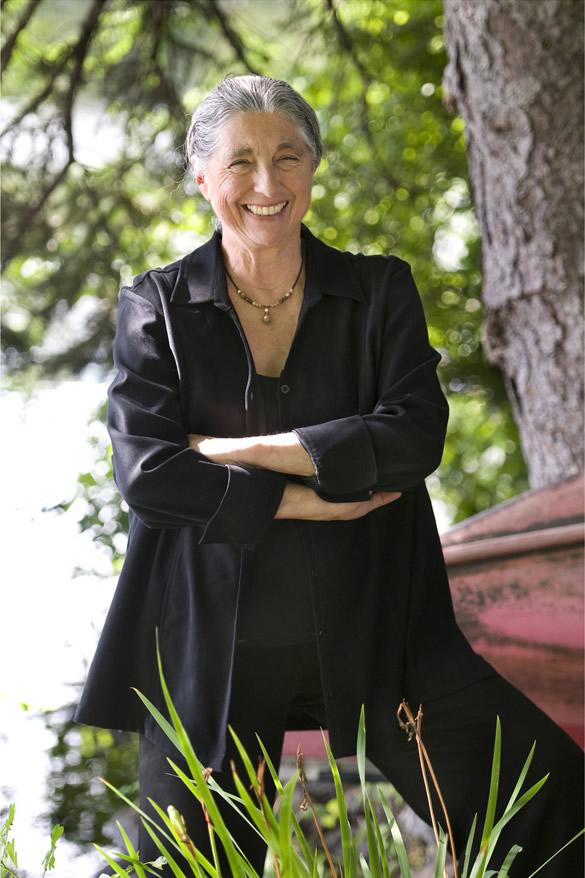
If you want to launch a successful social movement, try telling Carolyn North it’s impossible. Over the course of 83 years, the Bay Area-based dance therapist, writer, and flutist has talked her way into a summer dance intensive camp, having had little formal dance training; sung in a gospel choir; played flute semiprofessionally; worked as a midwife; learned to play bass bamboo flute while living in India; written and published 11 books; birthed three children; founded Daily Bread, a food recovery program; taught dance healing techniques to professional and novice dancers; and produced Musings on the Passing Scene, a series of bi-monthly articles reflecting on “the realities of our time with deep seriousness, humor, personal stories, and suggestions of how to keep on keeping on,” according to her website. Through it all, she remained married for 58 years to one man, UC Berkeley chemistry professor Herb Strauss, until his death in 2015.
Top of North’s amazing, free-radical list: She recently donated her Berkeley home valued at approximately $1.3 million — residential property she and her husband purchased in 1966 for $28,500 — to the East Bay Permanent Real Estate Cooperative. The Oakland-based organization permanently removes residential properties from the mass market through cooperatives and land trusts and creates affordable housing opportunities for Black, Indigenous, and other underserved minority groups. North’s former family home now offers affordable housing, primarily for artists who are people of color.
Today, North lives in El Sobrante on Wild and Radish Farm, a sustainable urban farm and multigenerational residential community she helped found and fund on a 13-acre plot of land just 20 minutes from downtown Oakland. During the pandemic, closeness to the natural world, human contact within her community pod, and “dancing beautifully” in the retrofitted garage and straw-bale abode she now calls home sustained her faith, physical health, and a profound belief that birth and death do not represent start and stop markers, but are instead simply episodes on the ever-repeating cycle of life.
Give us a few insights you have about living and moving beyond 80 that didn’t come as a result of COVID-19. Are there things you knew to be true and appreciated prior to the pandemic?
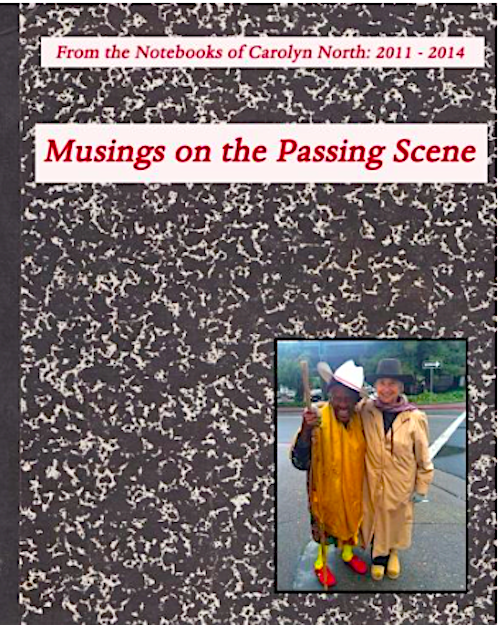
That can get deep very fast. There’s a reason for doing what I do and have done for as long as I can remember. Where to begin? Eeks! I always wanted to be a dancer. From an early age, I was interested in moving the body beautifully through space. I wanted to understand how the world worked by understanding and feeling how my body worked when I danced. That has been the leading edge of all my work.
Interestingly, as a child wanting to dance, I wasn’t permitted to. I don’t know what my parent were scared of; I think it was the body. I was not allowed to take dancing lessons, which is outrageous. I had to do it differently. I essentially spent my early life doing every art form I could get my hands on. It wasn’t until I was in my 40s that I came back to dance, my first love.
I learned that I could heal the emotional trauma of childhood by moving my body through space. I was recognizing all of healing could happen on the level of the body dancing. That addresses the larger questions of who am I, where am I, and what am I doing here? The big, basic, human questions about existence. The path was not just physical dancing, it was creating a spiritual practice.
Has the absence of human touch during the pandemic influenced your body awareness and/or psyche? What were your creative responses?
I was in a different circumstance because I moved into a community as soon as Covid started, so I wasn’t alone. But I’ve often wondered why I get to live so long when I’ve lost both of my siblings who were younger than I — and most of my friends. What kept me more than going, but strong through the whole quarantine, was that I danced every day. I live in a retrofitted garage, but I’d designed it with a dance floor. Half of it is an open space. What has kept me healthy is dancing itself. It satisfies on many levels simultaneously.
Other people in the community? We kept our distance, but we were a pod, so I did touch other people. I learned more about missing touching other people when my husband died (in 2015). You’re closer to a partner than to a child, really. That was agony, actually. After three years of grieving, you do it: you move on.
Describe your dance and sound healing practices; maybe starting with a story of your earliest and strongest memories of moving as a child and the relationship you have with dance today.
I’ve never thought of it that way, but there’s a piece of relevant history. I wasn’t allowed to dance but I fought for it. I did outrageous things. As a teenager, I made money babysitting and went to the New Dance Group in New York and started taking classes. I discovered one of the teachers was going to be teaching at Deerwood Music and Dance Summer Camp. I went for the auditions and I was a brand-new dancer even though I was 16 years old. I was determined to be part of that intensive summer [course]. I said to the director, “I’m willing to work in the kitchen if I can take classes with Donald McKayle.” He said, “That’s ridiculous! Why can’t you come as a student?” I told him my parents wouldn’t let me. He said he’d come to my house at such-and-such a time, but don’t tell them. And he showed up; Sherwood Kains, the choral director who ran the camp. He gave my parents hell, shamed them, and embarrassed them. He said, “She’s coming as a student.” That was the beginning of my life as a dancer.
How does the house you live in and the community you are a part of at Wild and Radish Farm sustain the style of independent living you’ve been practicing since that time?
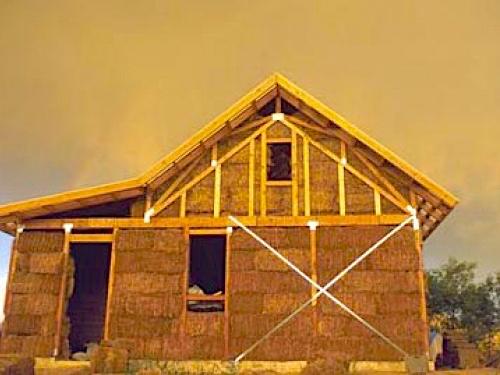
It’s not easy, but it’s real, and worth every bit of it. I spearheaded the retrofit of the broken-down ranch house on the property. I said I’d pay for a retrofit that’s done environmentally and built as a model of retrofitting old living spaces like are in the inner cities. Doing it differently so it’s environmentally sound in terms of the practices and materials. I’m living in my own creation.
This is a community in which we, ideally, all take care of one another. As an 83-year-old person I bring money, elder wisdom, experience. They bring, ideally, doing all the work and making sure I’m ok. The multigenerational setting is the old way. That’s where the elders ended their lives in the way the society used to be. It’s an attempt at recreating that in the world we live in now.
You’ve written in your books about synchronicity and conscious dying, among other topics. How do you experience them in your life today?
They both belong to a certain level of perception. When you are living in tune with the natural world, the universe, the cosmos, synchronicity happens. I experienced that many times in my life. It happens to me every day.
I’ll give you one example that’s a story I’ve told many times. I played the flute professionally for a couple of years. During that time, I had a husband and three children and we got to go to India. I had heard a recording of an Indian bamboo bass flute, very unusual, and decided when I was in India I wanted to find a teacher, get a flute, and learn to play it. I got there and was told there was no such thing as a bamboo bass flute. I knew that was not true. One weekend in New Delhi, we were wandering around the streets and I heard the flute. Somebody was playing it outside somewhere. We tracked it through alleyways and finally found there was a little concert going on in a back courtyard. We stayed, talked, and he said of course I’ll be your teacher. His name was G. S. Sachdev; he died in 2018. We were there for a year and I studied. We became close as family.
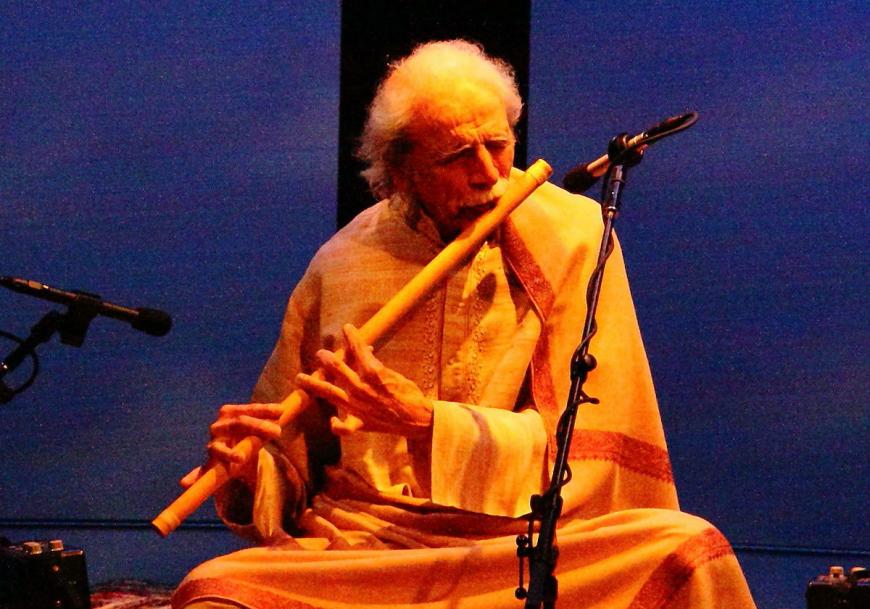
Later he got in trouble with his family, who did not want him to be a musician but to be an accountant in the family business. He became very ill, wrote to me, and asked me to help him get to America. I had no idea how to do such a thing. A year-and-a-half-later, I woke up one morning and said, “today you’re going to do it.” I called KPFA and asked if there was any way I could get a flute recording on the air. They said, “Who are you? Our 11 o’clock show never came in. Can you get down here right away?” So I went and we put Sachdev on the air. I said who he was and gave my phone number, asking if anyone knew how to bring him here. When I got back home, my phone was ringing. It was someone from the Ali Akbar College of Music who said they’d had a board meeting the night before and had decided they wanted to bring a North Indian flute player to the school to teach the flute.
If improvisation is at the heart of much of what you teach, practice, believe in, write about, and continue to research, what principles do you apply to that word?
The way the Western mind and society runs, it all starts in the head. You are working with thought and mind that refers to a physical material world. When you work improvisationally, you are not starting with your head, you are starting with heart, dreams, imagination, creativeness. Coming from that different place, is larger, more subtle, more deeply satisfying to most humans. It’s where the dancer before learning how to plié begins to dance from. It’s a philosophical stance.
Because I use dance as a healing modality and as a meditation practice, I’m interested in the deeper personal experience of moving your body beautifully through space. That’s when the magic happens. You lose that thing that happens when you’re watching in a mirror. You’re dancing from inside and getting to know your own impulses, emotions, and response to what you are doing. It’s more personal than following the rules, than doing it correctly. It’s living from the inside out as opposed to from the outside in.
While it’s often interesting to take a writing class, it’s useful, but very boring. What isn’t engaged is that deeper feeling, importance, and connection to the universe and everything in it. I’m outside looking at a wisteria vine. I know it not just with my eyes. I know it’s changes over time. I know who comes to it, what birds land on it and what they sound like. It’s all the senses are part of the experience of everything I do.
Let’s talk about death and dying a good death and fear. What do you know?
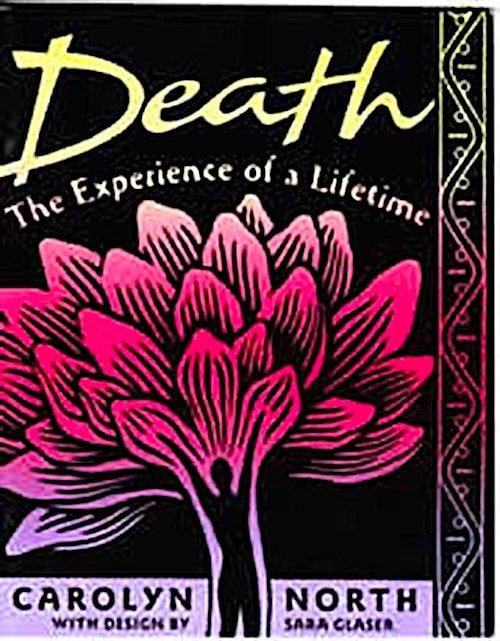
I think about it all the time. I’m interested in fear. Because I’m going to die and because I have a mindset that does not believe dying is the end of everything. It’s the end of a cycle. Working through the cycle is what life is about. You can see that in plants. They start up little from the ground, they bud, grow, flower, fall, collapse, but it’s not the end of the plant, because it starts the next cycle the next season. Death is the same. The fear comes from thinking you’re going to disappear. Thinking that the you that is you is no longer going to be in the world. That is unbelievably painful, but I think that is not the case. It has emotion and loss, but it’s not the end of you.
As I reach my own old age, my whole biology and psychology is geared for death. It also says my leg hurts, this other thing hurts. It’s getting to be more trouble to be here than it’s worth. So when I do make my leave, I will be ready for it. I’ve seen with each dying friend that as they pass over, everything lights up. It’s like they’re seeing a miracle they are accepting. I lost a lot of friends during the AIDS epidemic. It was possible to choreograph their endings. I helped them through it; they helped me by reporting back. These were young men in the prime of life and it was tragic, but as they were going, their eyes light up. I can hardly wait to see them again. I’m sounding debonair and probably I won’t be so debonair when it occurs, but who knows? I don’t walk around with that dread that society teaches us to have. Part of what I’m doing by the way I live now is giving an argument against that terror. We’re kept frightened by society and this fear is the fear of death and of not being.
How has living your life as an artist in the Bay Area defined you in ways other than expected?
That’s a fun question because I remember growing up in New York City’s suburbs. I was terrified of growing up because I’d have to wear a girdle and stockings and not read books, because that’s what women did. I got married quite young and we lived in Europe for two years, but then we moved to Berkeley. It was the early ’60s, so hippie land. I could wear my jeans and that was OK. It was a positive shock. However, there was also a difference between the folks in the neighborhood, and I was a faculty wife. The faculty wives at Cal were still in the Old World and it was apparent that I was a bad girl. I was disobedient on principle.
You donated your home in Berkeley and all profit therefrom to support other artists, specifically artist of color. Not many people would make such a choice.
I think it’s not so much they wouldn’t want to. Most people wouldn’t think about it. Being an improviser, you think outside the box. The box is tripping us, killing us. It’s stupid and it’s not nearly as much fun as the colorfulness and play that’s available to us. I push the envelope, that’s true. To be 83 and doing what I’m doing is pushing the envelope, but I do it because certain things have to be done and other people aren’t doing them.
As an artist, I’m still making up new things. The need is tremendous for new things. If you’re creative, ideas are constantly coming up. Some I let go of, but others, I say “Ooh, yeah,” and I do it. It keeps you young to think of new things, but also to be the naughty girl.
Will art always be placed in competition with commercial profit? How hopeful are you that after the pandemic, art organizations and artists will be thought of not as charities or sacrificial creatives, but as respected, essential entities, and people contributing value and well-being to society?
For many people, yes, art will compete with commerce, but not for everybody. Some people can’t wait to get back to “normal” because it’s scary, jumping into a new place. But it also occurs to me that this time is a time of opportunity for other people; people who have been disenfranchised, not seen. And a time for people of color and other cultures who know how to maneuver the system. I hope they will use this opportunity to bring change and together, I believe we will do so.



